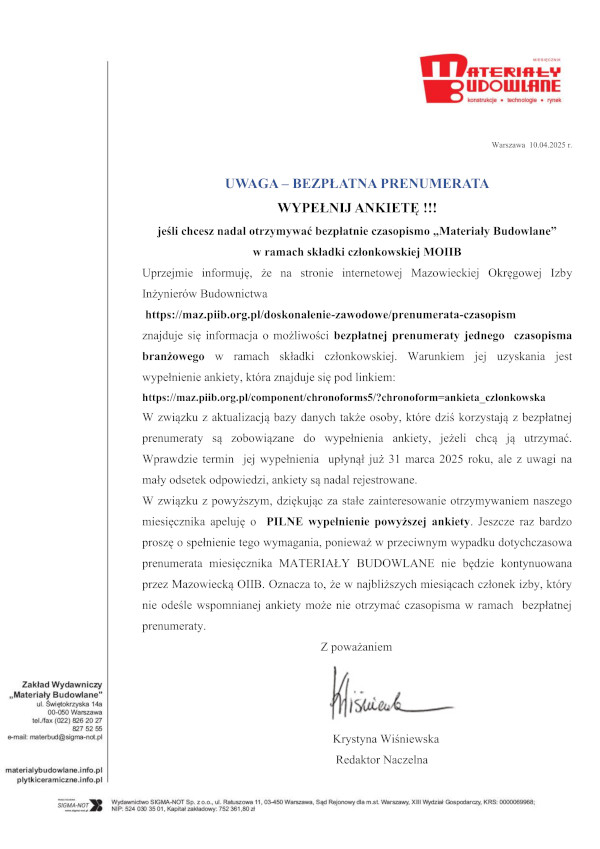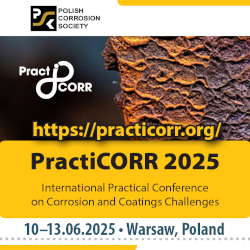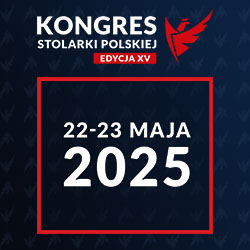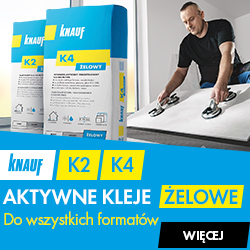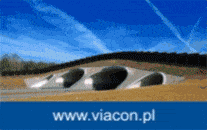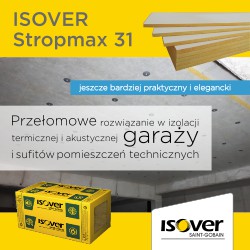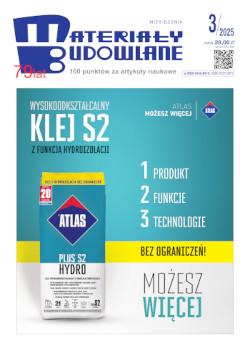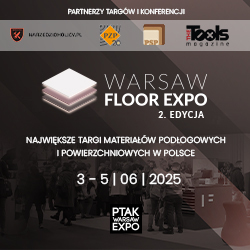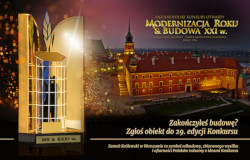Open Access (Artykuł w pliku PDF)
Effect of modification of cement mortar with selected nanoparticles on abrasiveness and subsurface tensile strength
dr inż. Jacek Szymanowski, Politechnika Wrocławska, Wydział Budownictwa Lądowego i Wodnego
ORCID: 0000-0002-8154-8726
Adres do korespondencji: Ten adres pocztowy jest chroniony przed spamowaniem. Aby go zobaczyć, konieczne jest włączenie w przeglądarce obsługi JavaScript.
DOI: 10.15199/33.2024.06.02
Oryginalny artykuł naukowy
Streszczenie. W artykule przedstawiono analizę wpływu wybranych nanocząstek na określone parametry zaprawy warstwy wierzchniej podłogi betonowej. Badania zostały przeprowadzone na 13 seriach zapraw różniących się rodzajem dodatku oraz jego ilością. Wykazano, że dodatek każdej z badanych nanocząstek wpływa korzystnie na takie właściwości warstwy wierzchniej, jak ścieralność i przypowierzchniowa wytrzymałość na rozciąganie oraz określono optymalną ilość dodatku w przypadku każdego rodzaju nanocząstek.
Słowa kluczowe: warstwy wierzchnie; nanocząstki; podłogi betonowe; ścieralność; przypowierzchniowa wytrzymałość na rozciąganie.
Abstract. The article presents an analysis of the impact of selected nanoparticles on selected mortar overlay parameters in concrete floors. The tests were carried out for 13 series ofmortars differing in the type of additive and its amount. It was shown that the addition of each of the tested nanoparticles had a positive effect on the overlay properties, such as abrasion and subsurface tensile strength, and the optimal amount of the additive for each type of nanoparticles was indicated.
Keywords: overlays; nanoparticles; concrete floors; abrasion resistance; subsurface tensile strength.
Literatura
[1] Hajduk P. Projektowanie podłóg przemysłowych. 2013.Warszawa:Wydawnictwo Naukowe PWN.
[2] Chmielewska B, Czarnecki L. Wymagania norm dotyczące posadzek przemysłowych. Materiały Budowlane. 2012; 2: 5 – 9.
[3] Sadłowski K, Urbanowicz D, Warzocha M. Podkłady podłogowe: Wymagania, projektowanie, wykonawstwo. Materiały Budowlane. 2015; 11: 81 – 84.
[4] PanX, Shi Z, Shi C, Ling T-C, LiN. Are view on concrete surface treatment Part I: Types and mechanisms. Constr. Build. Mater. 2017; 132: 578 – 590.
[5] Santos DS, Santos PM, Dias-Da-Costa D. Effect of surface preparation and bonding agent on the concrete-to-concrete interface strength. Constr. Build. Mater. 2012; 37: 102 – 110.
[6] Sadowski Ł. Adhesion in Layered Cement Composites; Springer. 2019; Berlin/Heidelberg, Germany, Volume 101.
[7] JavedA, Gillani SAA, Abbass W, Riaz MR, Hameed R, Abbas S, Salmi A, Deifalla AF. Mechanical Performance of Amorphous Metallic Fiber- Reinforced and Rubberized Thin Bonded Cement-Based Overlays. Sustainability. 2022; 14, 8226.
[8] Lin Y, Du H. Graphene reinforced cement composites: A review. Constr. Build. Mater. 2020; 265, 120312.
[9] Czarnecki L. Nanotechnologia w budownictwie. Przegląd Budowlany. 2011; 1.
[10] Silva JJ, Ismael R, Carmo RNF, Lourenço C, Soldado E, Costa H, Júlio E. Influence of nano-SiO2 and nano-Al2O3 additions on the shear strength and the bending moment capacity of RC beams. Constr. Build. Mater. 2016; 123: 35 – 46.
[11] Silva JJ, Ismael R, Carmo RNF, Lourenço C, Soldado E, Costa H, Júlio E. Influence of nano-SiO2 and nano-Al2O3 additions on the shear strength and the bending moment capacity of RC beams. Constr. Build.Mater. 2016; 123: 35 – 46.
[12] Mohseni E, Miyandehi BM, Yang J, Yazdi MA. Single and combined effects of nano-SiO2, nano-Al2O3 and nano-TiO2 on the mechanical, rheological and durability properties of self-compactingmortar containing fly ash. Construction and Building Materials. 2015; 84: 331 – 340.
[13] Szymanowski JM, Sadowski Ł. Functional and adhesive properties of cement-based overlays modified with amorphous silica nanospheres. Journal of Adhesion. 2020, 96, nr 1-4: 207 – 228.
[14] Szymanowski JM, Sadowski Ł. The influence of the addition of tetragonal crystalline titanium oxide nanoparticles on the adhesive and functional properties of layered cementitious composites. Composite Structures. 2020; 233, art. 111636: 1 – 11.
[15] Szymanowski JM, Sadowski Ł. The development of nanoalumina-based cement mortars for overlay applications in concrete floors. Materials. 2019; 12, nr 21, art. 3465.
[16] Szymanowski J. Comparative analysis of the effect ofmodifying overlay materialwith selected nanoparticles on its adhesion to the substrate in concrete floors.W:Advanced Joining Processes/Lucas F.M. da Silva, PauloA. F.Martins, Mohamad S. El-Zein (ed.). Singapore: Springer, cop. 2020. s. 131 – 151.
[17] PN-EN 13892-3:2005Metody badań materiałów na podkłady podłogowe – Część 3: Oznaczenie odporności na ścieranie według Boehmego.
[18] PN-EN 1542:2005 Wyroby i systemy do ochrony i napraw konstrukcji betonowych – Metody badań – Pomiar przyczepności przez odrywanie.
[19] Krzywiński K, Sadowski Ł, Szymanowski J, Żak A, Piechówka-Mielnik M. Attempts to Improve the Subsurface Properties of Horizontally-Formed Cementitious Composites Using Tin(II) Fluoride Nanoparticles. Coatings 2020, 10, 83.
[20] Haruehansapong S, Pulngern T, Chucheepsakul S. Effect of nanosilica particle size on the water permeability, abrasion resistance, drying shrinkage, and repair work properties of cementmortar containing nano-SiO2.Advances in Materials Science and Engineering 2017.
[21] Nivethitha D, Srividhya S,Dharmar S. Reviewon Mechanical Properties of Cement Mortar Enhanced with Nanoparticles. Int. J. Sci.Res. 2014, 5, 913 – 916.
[22] Paul SC, van Rooyen AS, van Zijl GP, Petrik LF. Properties of cementbased composites using nanoparticles: A com-prehensive review. Constr. Build. Mater. 2018; 189: 1019 – 1034.
[23] Krakowiak KJ, Thomas JJ, James S, Abuhaikal M, Ulm F-J. Development of silica-enriched cement-based materials with improved aging resistance for application in high-temperature environments. Cem. Concr. Res. 2018; 105: 91 – 110.
[24] Diamanti MV, Paolini R, Rossini M,Aslan AB, ZinziM, Poli T, Pedeferri MP. Long termself-cleaning and photocatalytic performance of anatase added mortars exposed to the urban environment. Constr. Build. Mater. 2015; 96: 270 – 278.
[25] Mohammed A, Sanjayan JG, Duan WH, Nazari A. Graphene Oxide Impact on Hardened Cement Expressed in Enhanced Freeze – Thaw Resistance. J. Mater. Civ. Eng. 2016; 28, 4016072.
[26] BeeldensA.An environmental friendly solution for air purification and self-cleaning effect: the application of TiO2 as photocatalyst in concrete. In Proceedings of the Transport Research Arena Europe – TRA, Göteborg, Sweden, 12-15 June 2006; pp. 12 – 16.
[27] Behfarnia K, Salemi N. The effects of nano-silica and nano-alumina on frost resistance of normal concrete. Constr. Build.Mater. 2013; 48: 580 – 584.
[28] Liu J, Li Q, Xu S. Influence of nanoparticles on fluidity and mechanical properties of cement mortar. Constr. Build. Mater. 2015; 101: 892 – 901.
[29] Wang L, Zheng D, Zhang S, Cui H, Li D. Effect of Nano-SiO2 on the Hydration andMicrostructure of PortlandCement.Nanomaterials 2016; 6, 241.
[30] Ng DS, Paul SC,AnggrainiV, Kong SY, Qureshi TS, Rodriguez CR, Liu QF, Šavija B. Influence of SiO2, TiO2 and Fe2O3 nanoparticles on the properties of fly ash blended cement mortars. Constr. Build. Mater. 2020; 258, 119627.
[31] Francioso V, Moro C, Martinez-Lage I, Velay-Lizancos M. Curing temperature: A key factor that changes the effect of TiO2 nanoparticles on mechanical properties, calcium hydroxide formation and pore structure of cement mortars. Cement and Concrete Composites. 2019; 104, 103374.
Przyjęto do druku: 20.05.2024 r.
Materiały Budowlane 6/2024, strona 8-11 (spis treści >>)


